Pringle of Scotland, stands as a beacon of heritage and craftsmanship in the world of fashion. Established in 1815 by Robert Pringle in the Scottish Borders, the brand has carved out a prestigious reputation for itself, particularly in the realm of luxurious knitwear. Specializing in cashmere since 1870, Pringle of Scotland’s commitment to quality and innovation has earned it a royal warrant as manufacturers of knitted garments. With flagship stores in iconic locations such as London’s Mount Street and Edinburgh’s George Street, and a presence in global markets from Shanghai to New York, Pringle of Scotland continues to be a symbol of enduring style and excellence.
The company’s storied history is marked by significant milestones that have shaped its evolution. In the early days, Pringle of Scotland was primarily focused on producing hosiery and underwear. However, the appointment of Otto Weisz as the first full-time designer in the knitwear industry in 1934 heralded a new era of creativity and innovation. Under Weisz’s direction, the twinset and the Argyle pattern—now synonymous with the brand—gained immense popularity, adorning the likes of Jean Simmons, Brigitte Bardot, and Grace Kelly. This period solidified Pringle’s status as a fashion pioneer, blending traditional Scottish patterns with contemporary elegance.
The brand’s journey through the late 20th century was characterized by strategic expansions and notable collaborations. Acquired by Joseph Dawson (Holdings) Limited in 1967, which later became Dawson International Plc, Pringle of Scotland embraced the burgeoning sportswear market. Sponsoring top British golf players such as Nick Faldo and Colin Montgomerie, Pringle seamlessly integrated itself into the world of leisure and sportswear. The 1980s and 1990s saw the brand become a household name, particularly among the football terrace culture, earning a nostalgic place in the hearts of the casual movement.
Entering the new millennium, Pringle of Scotland faced challenges and transformations. Under new ownership by Hong Kong-based S.C. Fang & Sons Company, Ltd., and with headquarters in Hawick, Scotland, and a design studio in London, the brand sought to revitalize its offerings. Despite financial losses, significant investments were made to steer Pringle back to profitability. This era saw leadership changes and the introduction of luxury accessories and diffusion lines, such as the Japanese-inspired Pringle 1815. Notable collaborations, including those with H&M and Palace, further showcased Pringle’s ability to blend heritage with contemporary trends. As Pringle of Scotland celebrated its 205th anniversary in 2020, the brand’s enduring legacy of quality, innovation, and style remained firmly intact.
How to tell if Pringle of Scotland is vintage from the logo
Pringle of Scotland, renowned for its knitwear, has evolved its logo over the years. Recognizing the different logos can help you determine if your Pringle of Scotland item is vintage. The logo changes reflect the brand’s adaptation to different eras while maintaining its iconic imagery.
1900s to 2010s Pringle of Scotland logo
- The early logo prominently features the Pringle name along with the “OF SCOTLAND” tagline.
- The lion emblem is a significant part of the logo, depicting a heraldic lion standing on its hind legs.
- This logo remained consistent throughout most of the 20th century, symbolizing tradition and quality.
- The font style is classic and elegant, aligning with the brand’s heritage and reputation for luxury knitwear

1900s to 2010s Pringle of Scotland logo
2010s to now Pringle of Scotland logo
- The modern logo retains the lion emblem but with slight refinements for a more contemporary look.
- The font has been updated to a sleeker, more streamlined design, reflecting the brand’s modern evolution.
- The “OF SCOTLAND” tagline is still present, emphasizing the brand’s Scottish heritage.
- The overall design is more minimalistic, aligning with current design trends while preserving the brand’s identity.

2010s to now Pringle of Scotland logo
How to tell if Pringle is vintage from the tags
Pringle of Scotland has a rich history dating back to the early 19th century, known for its luxurious knitwear and iconic designs. Over the decades, the branding and tag design have evolved significantly, reflecting changes in fashion trends, manufacturing techniques, and company branding. Here’s a guide to identifying vintage Pringle garments based on their tags from various decades.
Struggling with vintage tags or labels? Upload a picture on our vintage tag identification page, and we’ll help you out!
1950s vintage Pringle tags
- Often features “Styled by Pringle” along with the location in Scotland.
- Includes detailed crests or logos, often indicating royal appointments.
- Typically made from durable materials with intricate embroidery.
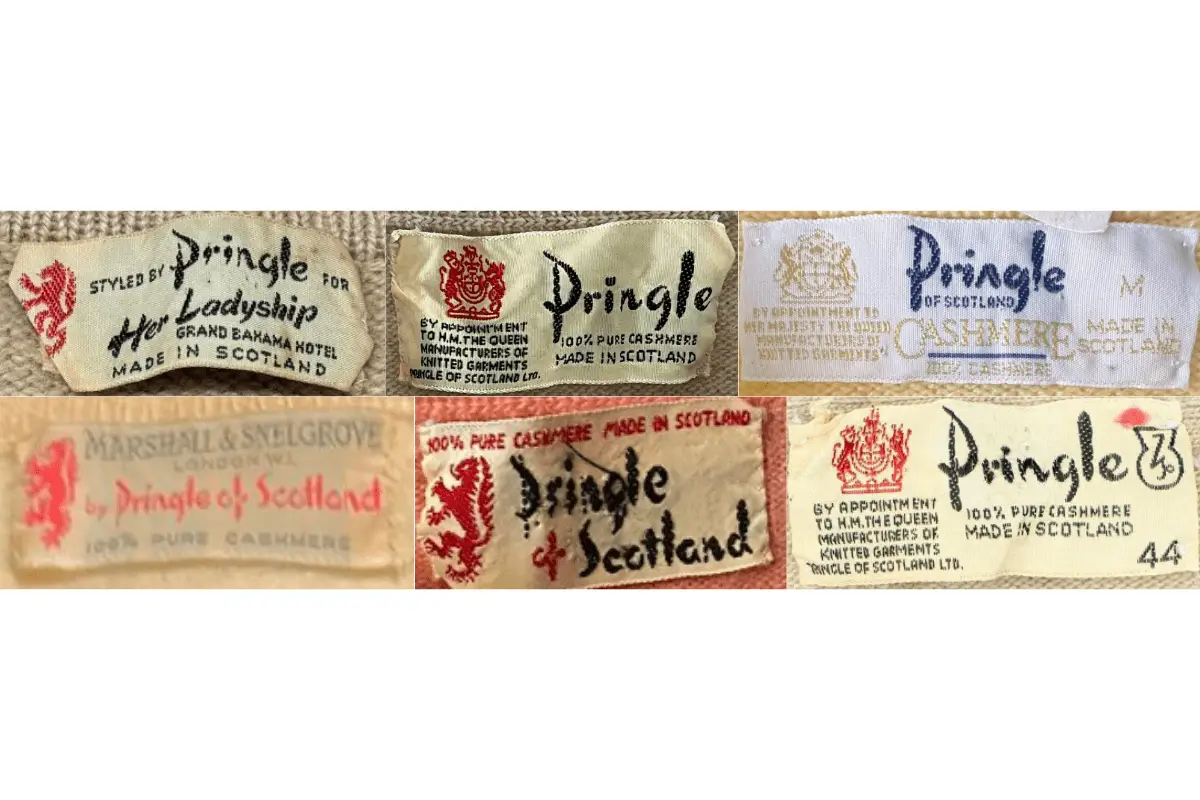
1950s Pringle tags
1960s vintage Pringle tags
- Continued use of royal crests and detailed logos.
- Tags are generally more colorful, sometimes featuring red and gold tones.
- Text often includes “By Appointment to H.M. The Queen” and manufacturing details.
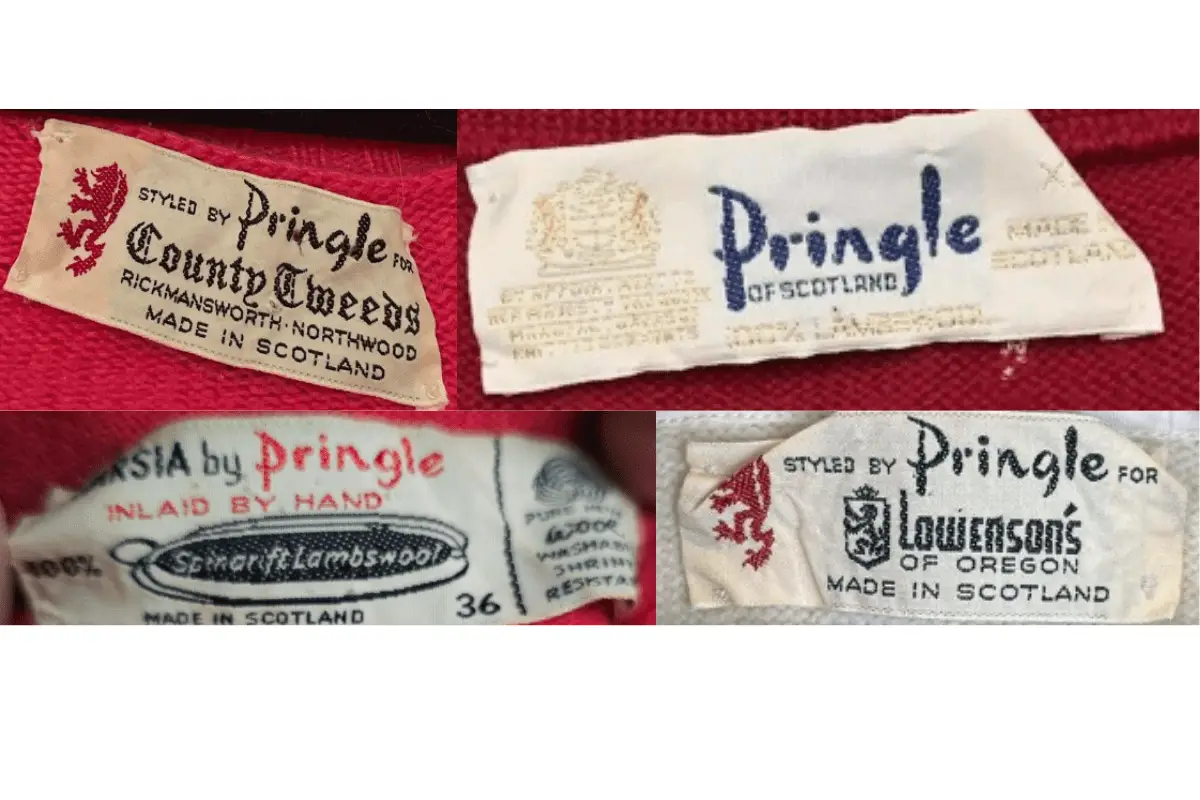
1960s Pringle tags
1970s vintage Pringle tags
- Tags may feature simplified logos compared to previous decades.
- Introduction of different fonts, including both serif and sans-serif types.
- Often includes “Made in Scotland” prominently.
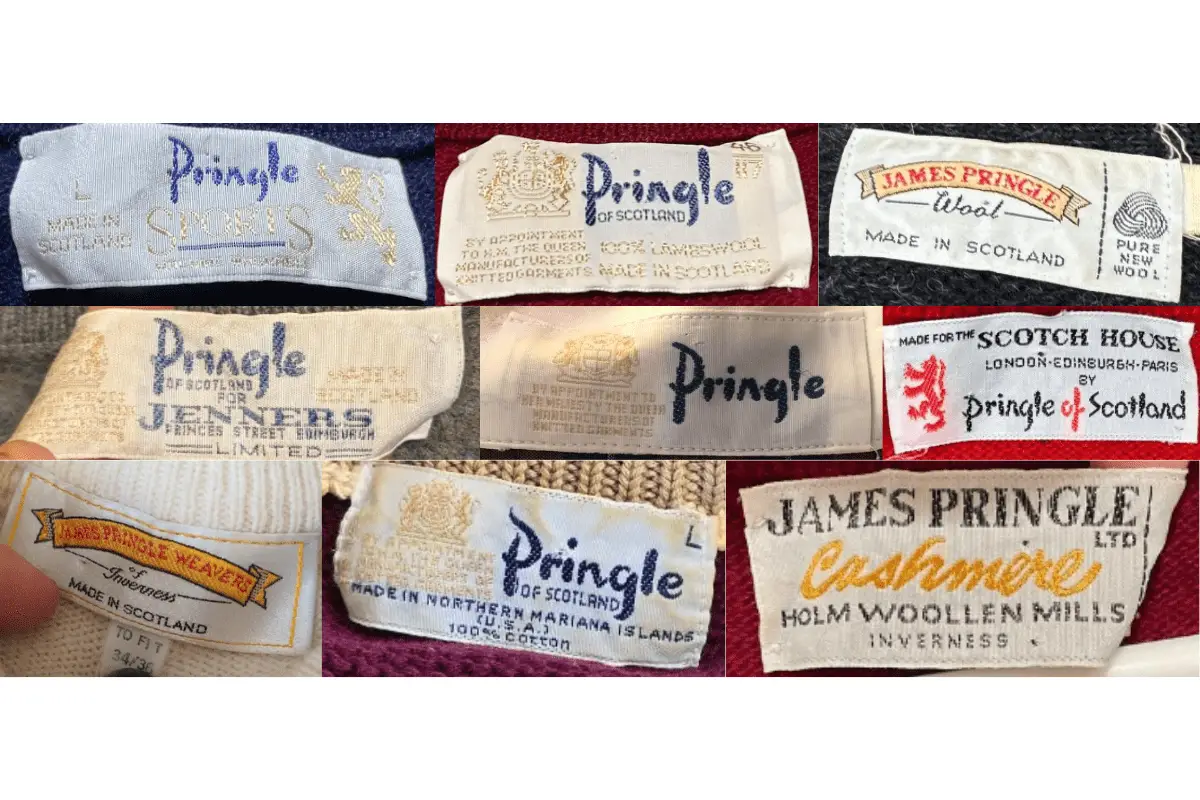
1970s Pringle tags
1980s vintage Pringle tags
- Variety of tag designs, including both rectangular and square shapes.
- Use of both bold and cursive fonts, sometimes in combination.
- Tags often feature “100% Pure Cashmere” and other material details.
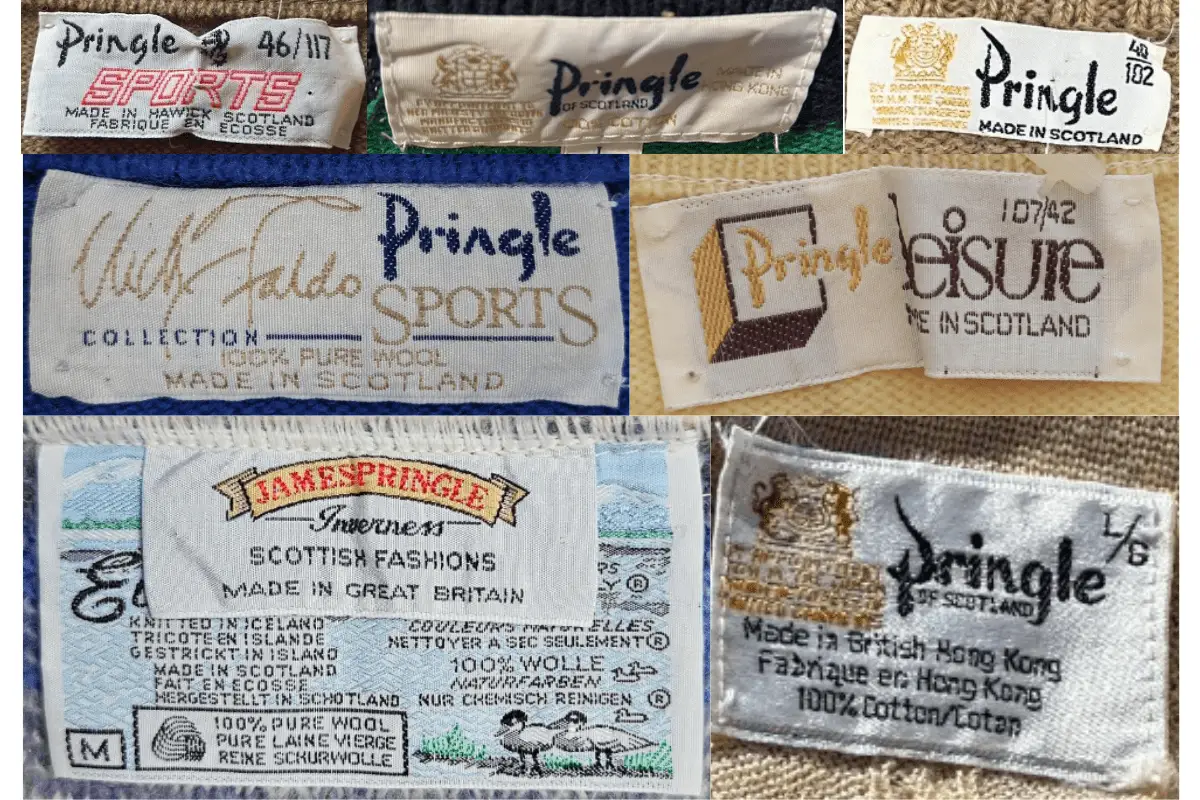
1980s Pringle tags
1990s vintage Pringle tags
- More modern, minimalistic designs compared to earlier decades.
- Introduction of different lines such as “Pringle Golf” and “Faldo by Pringle.”
- Tags often feature simpler color schemes and fonts.
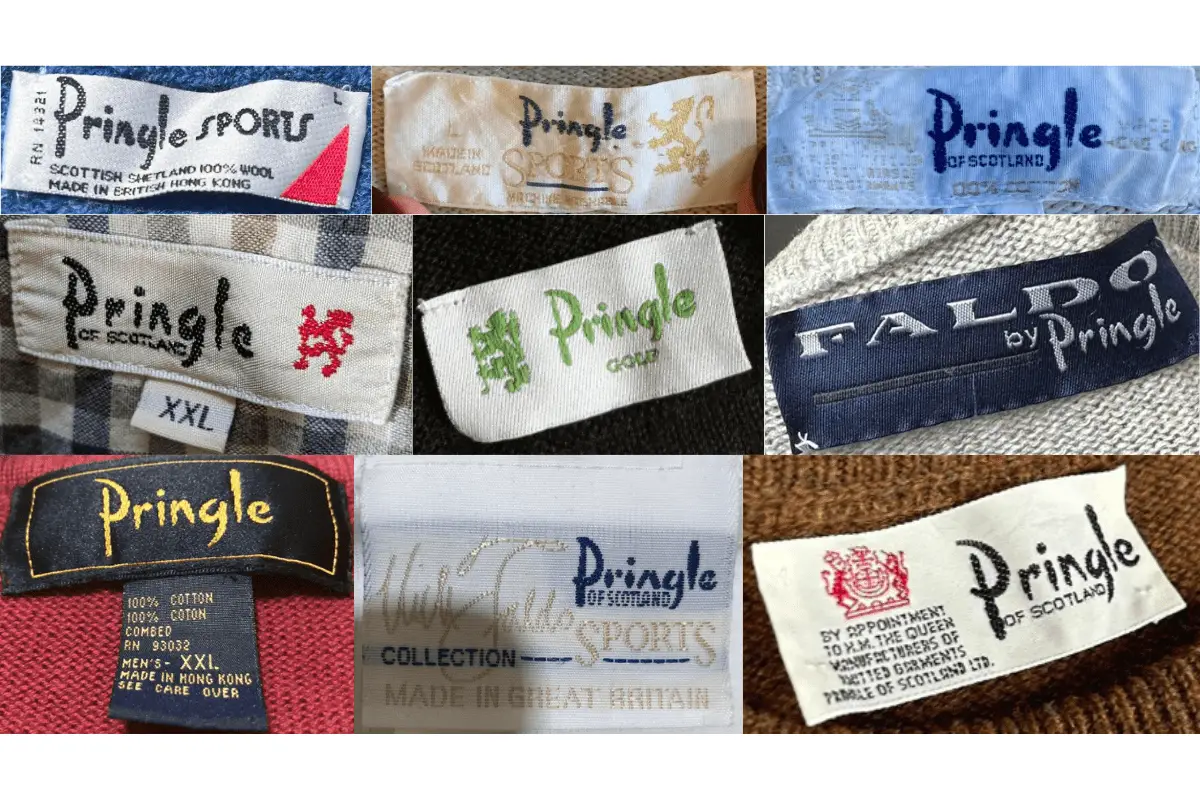
1990s Pringle tags
2000s vintage Pringle tags
- Tags feature a more contemporary look with modern fonts and designs.
- Use of loop tags becomes more common.
- Introduction of new lines and collaborations, reflected in the tag designs.
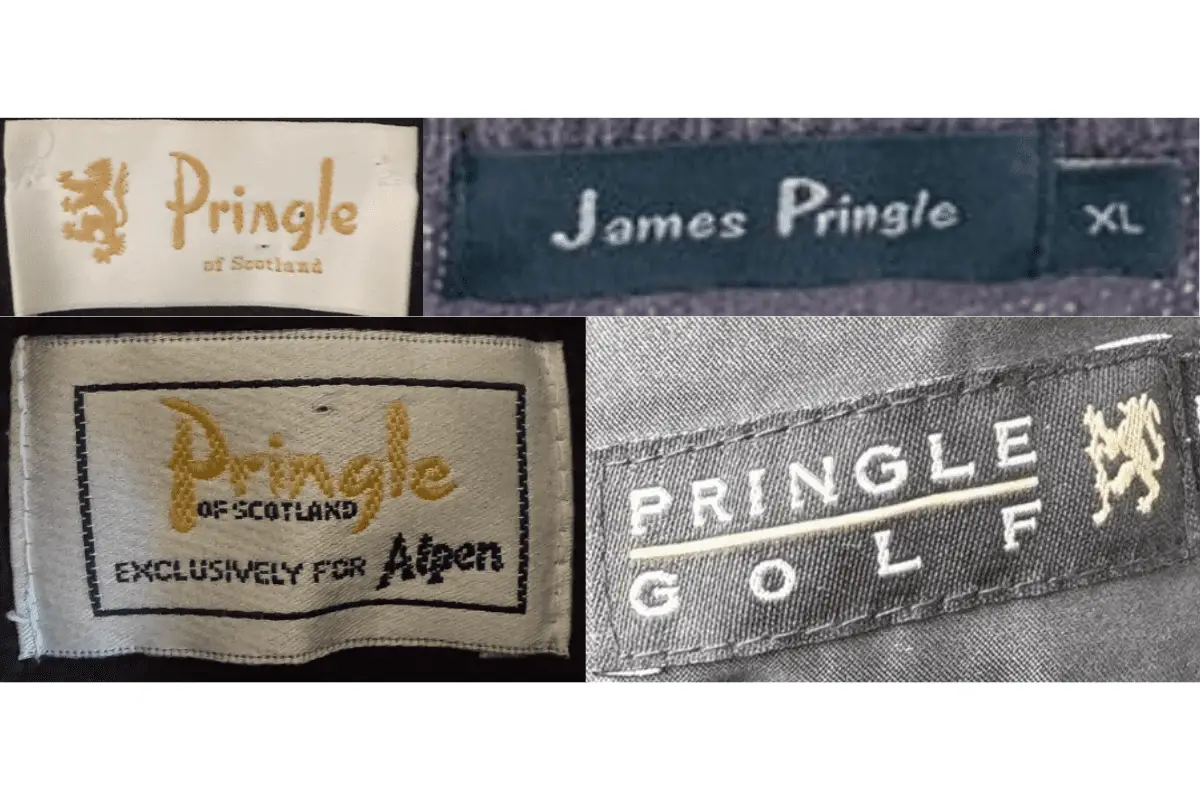
2000s Pringle tags
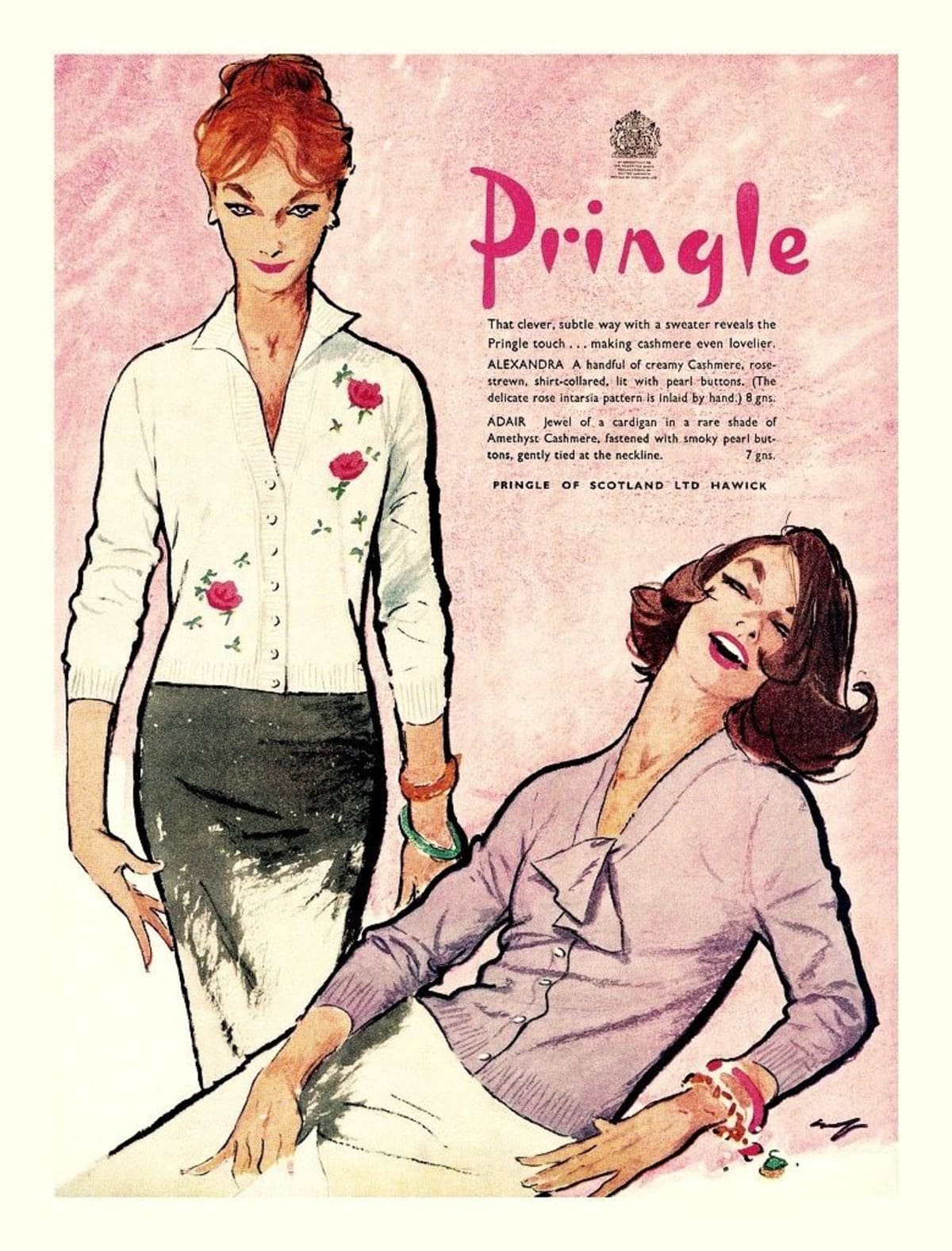

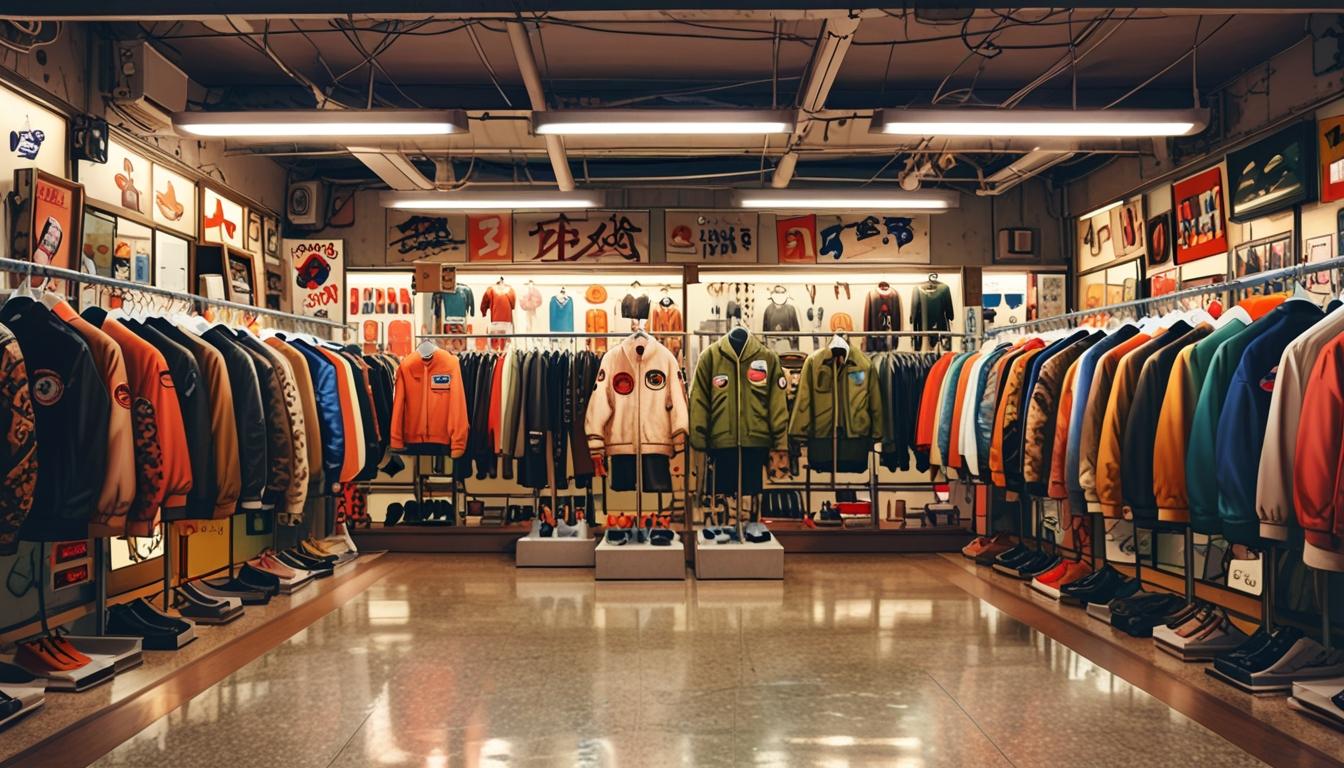


The tags are vertical along each side of the seams just above the waist band.
WOW just what I was searching for. Came here by searching for sss
casino en ligne France
Thanks for sharing your thoughts about sss. Regards
casino en ligne
I couldn’t refrain from commenting. Well written!
casino en ligne fiable
Just want to say your article is as astounding. The clarity
in your post is simply nice and i can assume you are an expert on this subject.
Well with your permission allow me to grab your feed to keep up
to date with forthcoming post. Thanks a million and please carry on the
enjoyable work.
casino en ligne
Hi to every one, the contents existing at this web page are really remarkable
for people knowledge, well, keep up the good work fellows.
casino en ligne France
Great article! This is the type of information that are supposed to be
shared around the net. Shame on Google for now not positioning this submit upper!
Come on over and discuss with my web site . Thanks =)
casino en ligne France
These are actually enormous ideas in about blogging.
You have touched some nice things here. Any way keep up
wrinting.
casino en ligne
Hi there, just became aware of your blog through Google, and found
that it’s really informative. I’m going to watch out for
brussels. I will appreciate if you continue this in future.
A lot of people will be benefited from your writing.
Cheers!
casino en ligne France
I’m impressed, I must say. Seldom do I come
across a blog that’s both equally educative and interesting,
and let me tell you, you have hit the nail on the head.
The problem is something too few folks are speaking intelligently about.
Now i’m very happy I came across this in my hunt for something regarding this.
casino en ligne
I know this if off topic but I’m looking into
starting my own weblog and was curious what all
is needed to get set up? I’m assuming having a blog like yours would cost a pretty penny?
I’m not very web savvy so I’m not 100% sure.
Any recommendations or advice would be greatly appreciated.
Many thanks
casino en ligne